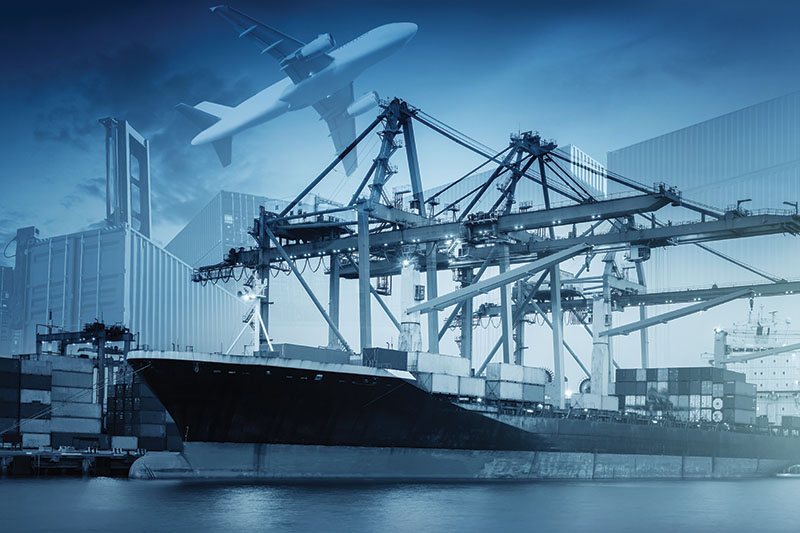Top 25 Freight Forwarders: Challenges beget opportunities
Despite the high hurdles facing the freight forwarding industry, positive indicators point to continued growth especially for forwarders with the resources, capability, and the culture to adapt.
The last 18 months have put tremendous pressure on freight forwarders. Consequently, this year’s Top 25 Global Freight Forwarders list, compiled by Armstrong & Associates, shows only slight movements in the rankings of the world’s biggest players.
Most maintained their same slot with a few, such as C.H. Robinson, Kerry Logistics and GEODIS moving up two or more positions in the rankings. This can be largely attributed to a slowing of merger and acquisition (M&A) activity last year and a number of factors that continue to impact the freight forwarding business.
Among those are capacity issues across all transport modes; fast changes to consumer behavior that has given rise to e-commerce; the evolving “Amazon effect” that demands fast deliveries; commodity shortages that have resulted in warehouse restocking issues; as well as growing concerns around climate change and sustainability.
Noteworthy is the trend toward digital forwarding and the fact large companies, once classified as traditional freight forwarders, now operate as integrated, third-party logistics (3PL) service providers. However, despite the ongoing challenges, opportunity abounds.
“Consumer demand continues to soar, and companies are responding,” says Mike Short, president of global forwarding at C.H. Robinson. “I’ve been in the industry more than 24 years and have not seen demand remain this high for so long.”
M&A
While last year all bets were off for any bold merger and acquisitions (M&A), the first half of 2021 has seen increased activity, particularly in countries with high vaccination rates. Already significant deals are being announced.
In fact, M&A activity has become so significant that it’s changing the dynamics at the top end of the forwarding market. Case in point: DSV Panalpina’s acquisition of Agility Global Integrated Logistics. “This makes it one of the largest forwarders globally, and almost certain to be on the same scale as DHL and Kuehne+Nagel,” remarks Nick Bailey, head of research at Transport Intelligence (Ti).
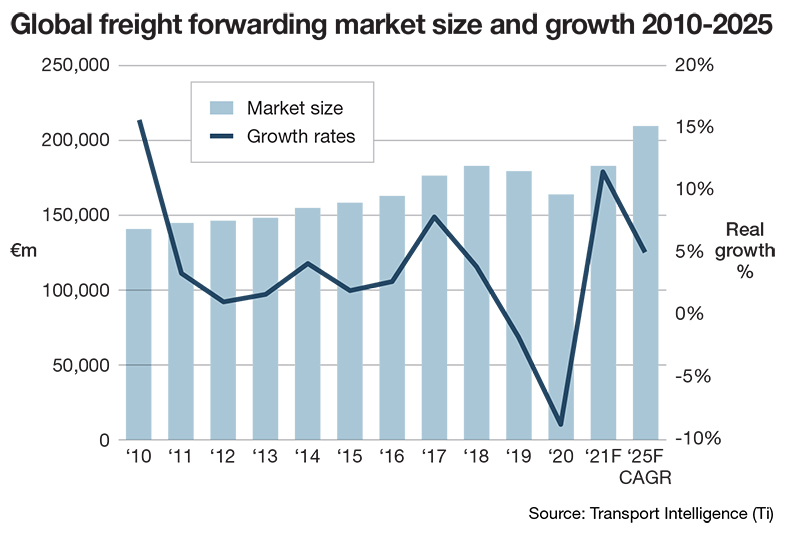
In the meantime, Kuehne+Nagel’s own $1.2 billion acquisition of Chinese forwarder Apex International in May boosts its position in China/U.S. airfreight. “Apex has significant charter operations and has been developing significant capacity out of Southeast Asia, including Vietnam,” says Evan Armstrong, president of Armstrong & Associates, who adds that K+N also grew its business by serving e-commerce, high-tech and healthcare customers.
In February, S.F. Holdings, the largest courier, expedited shipping and e-commerce operator in China, and Kerry Logistics merged to create the second largest 3PL in greater China behind Sinotrans, reports Armstrong.
Other significant deals so far this year include TFI International’s $800-million acquisition of UPS Freight; Uber Freight’s $2.25-billion purchase of Transplace; DP World’s $1.2-billion purchase of U.S.-based Syncreon and $890-million purchase of South Africa’s Imperial Logistics; and the GEODIS purchase of Texas-based Velocity Freight Transport. That deal expands GEODIS’ capacity solutions freight brokerage offering in North America at a time when the industry continues to face driver and truck shortages.
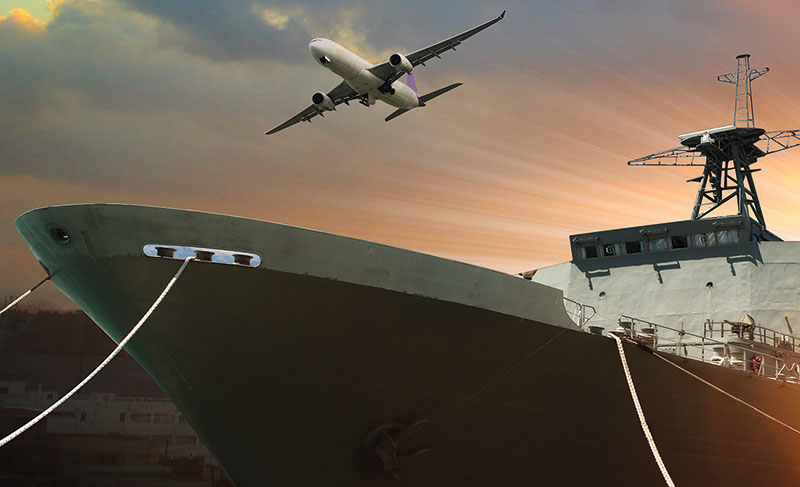
Top 25 Global Freight Forwarders
Ranked by 2020 Logistics Gross Revenue/Turnover and Freight Forwarding Volumes*
|
A&A Rank | Provider | Gross Revenue | Ocean TEUs | Air Metric Tons |
1 | 28,453 | 2,862,000 | 1,667,000 | |
1 | 25,787 | 4,529,000 | 1,433,000 | |
2 | 20,761 | 2,052,000 | 1,094,000 | |
2 | 18,269 | 2,204,902 | 1,272,405 | |
3 | 12,174 | 3,750,000 | 532,300 | |
4 | 10,116 | 1,012,600 | 926,730 | |
5 | 19,347 | 660,152 | 720,115 | |
6 | 7,416 | **1,081,000 | 363,000 | |
7 | 15,490 | 1,200,000 | 225,000 | |
8 | 6,867 | 1,019,924 | 493,903 | |
8 | 11,048 | 620,000 | 988,880 | |
9 | 9,135 | 866,631 | 290,506 | |
10 | 5,265 | 761,000 | 574,000 | |
11 | 2,740 | 905,100 | 552,640 | |
12 | 5,750 | 640,063 | 556,875 | |
13 | 4,018 | 771,000 | 372,000 | |
14 | 4,248 | 764,000 | 337,000 | |
15 | 2,160 | 1,021,007 | 398,175 | |
16 | 6,346 | 662,000 | 221,000 | |
17 | 6,591 | **492,440 | 310,860 | |
18 | 7,260 | 523,300 | 117,400 | |
19 | 6,369 | 401,369 | 138,086 | |
20 | 2,274 | 190,000 | 750,000 | |
21 | 1,292 | 698,000 | 167,000 | |
22 | 2,467 | 347,638 | 114,736 |
*Revenues and volumes are company reported or Armstrong & Associates, Inc. estimates. Revenues have been converted to US$ using the average
annual exchange rate in order to make non-currency related growth comparisons. Freight forwarders are ranked using a combined overall average based
on their individual rankings for gross revenue, ocean TEUs and air metric tons.
**Includes LCL shipments.
Copyright © 2020 Armstrong & Associates, Inc.
Armstrong sees M&A activity continuing to be hot—with many more buyers than sellers. “A number of 3PLs and forwarders have good financials and volumes to present prospective investors,” he says. “There are a lot of 3PL sellers eyeing big valuations.”
However, high valuations could make more big deals challenging. “We may see more focus on regional or sector specialists that can add depth or scale on attractive lanes and in high-value sectors,” says Bailey. “Mid-sized and smaller forwarders may find themselves in a more competitive market too, especially while capacity remains low and purchasing power can make real differences.”
Capacity issues
Despite indications that recovery is underway for forwarding, industry players believe that market dynamics remain skewed with limited capacity available and sky-high freight rates.
“Keeping up with the demands in the industry requires a lot of flexibility and foresight, and in the current volatile market, there’s a great challenge to accurately budget for record high transportation rates,” says Shawn Stewart, managing director, North America, at CEVA Logistics. “When providers are locked in on contracted rates without a mechanism to distribute those costs, business can become challenging for forwarders.”
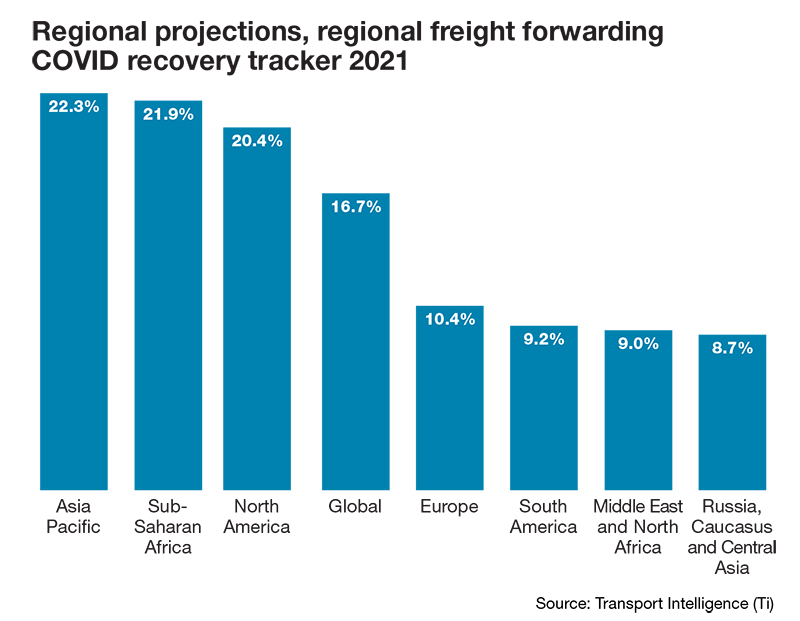
According to Ti’s Bailey, the market over the last year has seen huge volatility and uncertainty. “It’s almost impossible to predict when this series of ‘peak seasons’ will come to an end,” he adds.
The good news is that overall capacity is trending up in most ocean and air markets and congestion in the ports is improving. But while these conditions have been challenging for shippers, it has created opportunities for forwarders to offer creative solutions. As a result, some forwarders have been able to retain revenue and rate margins averaging 7.5%, Ti states in its recent report.
Deutsche Post DHL Group recently stated that it stayed on track for growth in the second quarter of 2021, reporting significant revenue increases of 22.2%. The company attributes this to rising global business activities and steadily growing e-commerce.
C.H. Robinson, which is also having a good year, helps customers combat ongoing capacity issues through its global suite of services and technology offerings. “One example is our air charter service,” say Short. “Currently, we’re averaging 15 to 20 air charters a week.”
Digital forwarding
Most large and mid-sized freight forwarders are investing in digital technology throughout their operations as part of their strategic plan to create a better customer and carrier experience as well as build customer loyalty.
“Digitalization is the driver that defines much of ‘the new normal’ in global forwarding,” observes Bailey. “This is true of both the incumbent forwarders who have added technology and technical expertise to their capabilities in recent years, as well as digital forwarding start-ups,” he says.
This is evident even in M&A activity such as FedEx’s $100-million investment in India-based e-commerce logistics startup Delhivery as well as Uber Freight’s $2.25-billion acquisition of Transplace.
“Effectively, Uber Freight is integrating a digital freight marketplace platform with a supply-side application,” says Frank Kenney, former Gartner analyst and director of market strategy at software company Cleo. “This is going to put a lot more pressure on the global logistics and transportation ecosystem to digitally transform quicker, especially 3PLs, freight brokerages and truckers.”
K+N, which invested in digital platforms years ago, is now reaping the benefits. “We can offer our worldwide customers the best, agile end-to-end logistics solutions, such as combining sea-air or rail transport solutions as an alternative to the currently constrained sea freight lanes,” says Mihok.
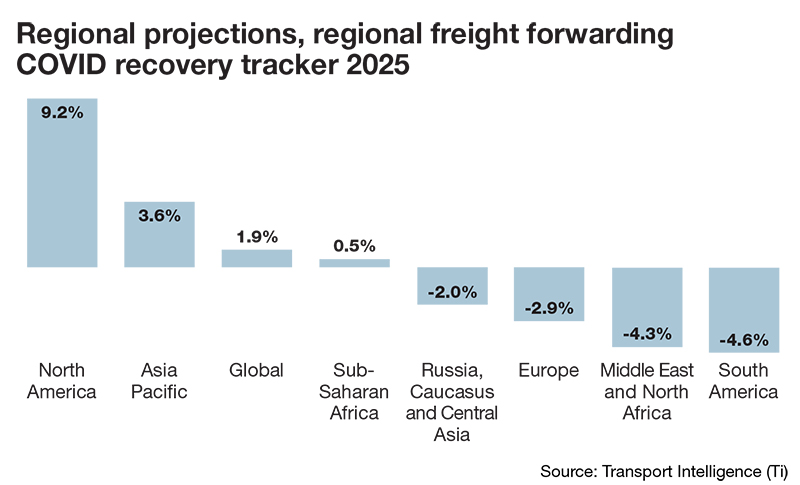
Digital start-ups have certainly come a long way in the past five years, and they continue to search for the right balance of technology and operational expertise to attain the value proposition for shippers. “Meanwhile, traditional freight forwarders endeavor to strike that same balance by finding the best ways to remove the operational inefficiencies that come with legacy systems,” adds Bailey.
Thomas Scientific finds agility, flexibility in stressful times
The pandemic created unprecedented supply and demand challenges, particularly for firms supplying equipment such as personal prospective equipment (PPE) and COVID-19 testing supplies.
Thomas Scientific of Swedesboro, N.J., a company well known for its ability to provide the latest in equipment and supplies to the science community, found itself in such a predicament, especially with demand coming during two waves. The first was for masks, gloves, and other PPE, and the second for swabs, transport media, tubes, and supplies related to COVID-19 detection tests.
Over the course of four months, orders increased by more than 300%.
“Speed was the primary factor for us,” recalls Randy Gilliland, vice president of purchasing, pricing and transportation for Thomas Scientific. He knew the company needed to find the right capacity solution that could deliver quickly either by air or ocean transport while balancing service and costs.
Supply chain pressures caused the company to being to employ international vendors, but was now experienced in moving international freight at the time. Consequently, the company hired forwarder C.H. Robinson to help develop flexible strategies to ship faster and at more competitive rates.
Those strategies included utilizing uncongested airports and charter flights, which was particularly successful since capacity was extremely tight among air cargo carriers.
Also important were daily, cross-functional meetings between Thomas Scientific and C.H. Robinson. These resulted in solutions for challenges such as working with new vendors, securing special permitting and USDA approvals for Customs filing, as well as creative ways to maintain the temperature of large volumes of sensitive products.
In fact, when demand was its highest, transit times for international shipments averaged between 8 days to 10 days, door-to-door. During this time, Thomas Scientific also increased it business and more than doubled its annual revenue.
And while no one knows what future demand will hold, company officials are now confident Thomas Scientific is more agile in international logistics.
However, Bailey warns that digital forwarders will have to watch out for the big traditional forwarders as “they catch up and implement new technologies and erode their key differentiator.” But probably the most significant development in the sector, he adds, is the realization among both digital and traditional forwarders that the highest margins can be achieved with true international supply chain management—the complex, global coordination of moving goods.
“This includes managing shipments from origin, handling the inland and international transportation component, doing some consolidation and deconsolidation, as well as some warehousing,” says Bailey. “And all this needs to be accompanied by real-time visibility and value-added services such as Customs clearance, insurance, analytics and other document handling services.”
Sustainability
Sustainability is becoming a prime issue with forwarders given the rate of global climate change. “We’ve already seen an uptick in awareness and investments during 2021,” says Bailey. It’s a subject that’s not leaving the agenda anytime soon,” Bailey says.
As a result, forwarders are increasingly introducing sustainability programs. “This includes implementing electric vehicle technology,” says Stewart, “although mass production in the United States seems to be approximately two years out—and the cost of entry is still more than the cost of traditional diesel trucks.”
With consumers increasingly demanding more transparency and higher standards throughout product lifecycles and supply chains, Bailey emphasizes that forwarders will need to show their commitment to reducing their carbon footprint.
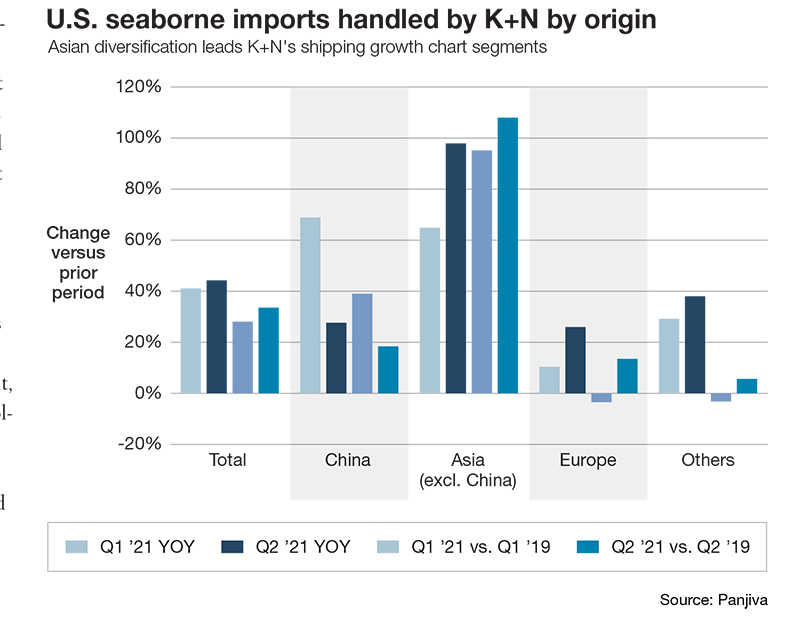
GEODIS, for one, has promised to reduce its CO2 emissions by 30% by 2030 compared to 2017. The company is ordering 200 LNG vehicles that will be fueled with biogas for urban deliveries in France.
DB Schenker announced its Eco Solutions for every mode of transportation. Here DB Schenker transparently calculates and provides the CO2 footprint of customer supply chains and offers recommendations for optimization.
K+N’s Mihok explains how advanced CO2 visibility through big data and predictive analysis enables K+N to see and reduce its customers’ CO2 emissions and accurately offset those emissions. “Through our Net Zero Carbon program, we offer environmentally friendly, sustainable and innovative supply chain solutions that reduce CO2 emissions,” he says. “For example, we offer individual biofuel/SAF solutions in cooperation with carriers.”
And earlier this year C.H. Robinson launched Emissions IQ that measures and reduces emissions across modes for global supply chains.
Outlook
Despite challenges in the forwarding industry, positive indictors point to continued growth, especially for forwarders with the resources, capability and culture to adapt.
“It’s still a very challenging market, and capacity and congestion problems can derail recovery,” Bailey warns.
However, most shippers have realized the importance in re-evaluating their supply chains and working out issues with their forwarders. Many forwarders have embraced these opportunities and have emerged as even more valuable partners.

Article Topics
Motor Freight News & Resources
LM Podcast Series: Assessing the freight transportation and logistics markets with Tom Nightingale, AFS Logistics XPO opens up three new services acquired through auction of Yellow’s properties and assets FTR’s Trucking Conditions Index weakens, due to fuel price gains TD Cowen/AFS Freight presents mixed readings for parcel, LTL, and truckload revenues and rates Preliminary March North America Class 8 net orders see declines National diesel average heads down for first time in three weeks, reports EIA Trucking industry balks at new Biden administration rule on electric trucks: ‘Entirely unachievable’ More Motor FreightLatest in Logistics
LM Podcast Series: Assessing the freight transportation and logistics markets with Tom Nightingale, AFS Logistics Investor expectations continue to influence supply chain decision-making The Next Big Steps in Supply Chain Digitalization Warehouse/DC Automation & Technology: Time to gain a competitive advantage The Ultimate WMS Checklist: Find the Perfect Fit Under-21 driver pilot program a bust with fleets as FMCSA seeks changes Diesel back over $4 a gallon; Mideast tensions, other worries cited More LogisticsSubscribe to Logistics Management Magazine

Find out what the world's most innovative companies are doing to improve productivity in their plants and distribution centers.
Start your FREE subscription today.
April 2023 Logistics Management

Latest Resources


